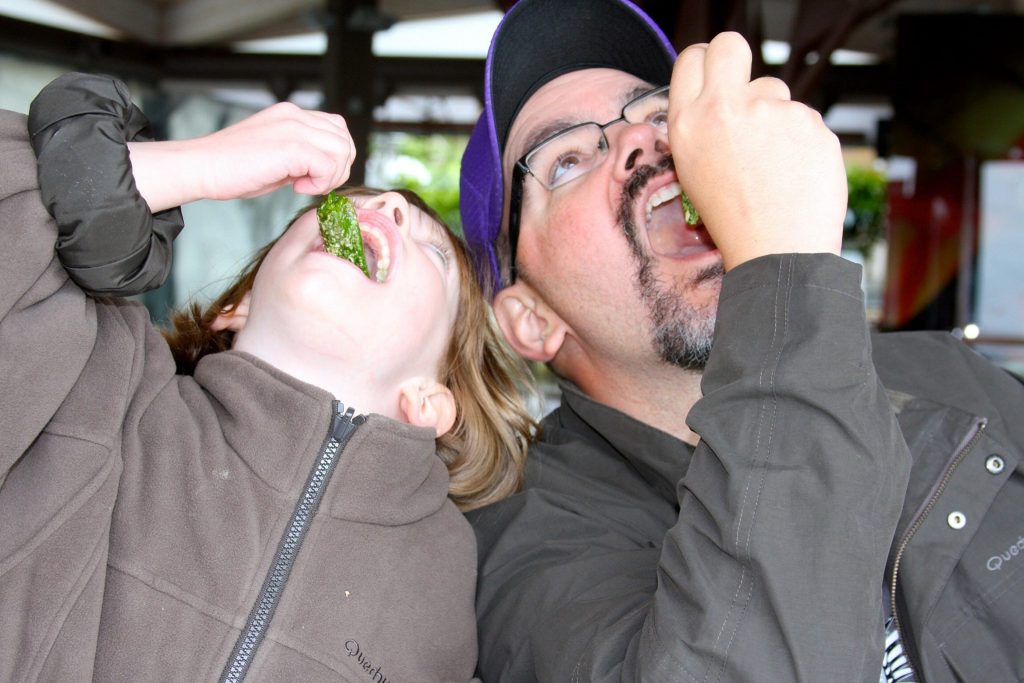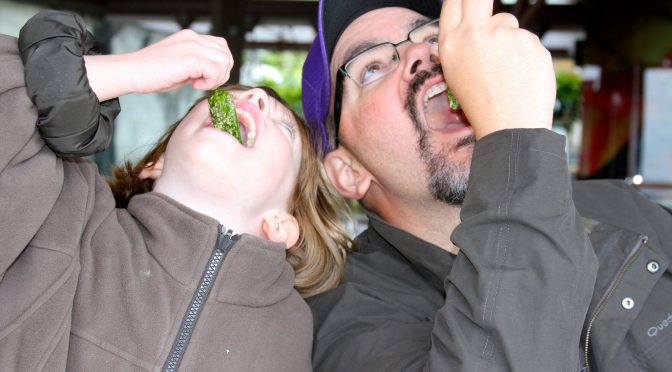I hate peppers. They smell nasty when they are cooking and they taste vile. My dad had literally hundreds of pepper plants in his garden. He would always give me a hard time when I ate his homemade chorizo, which I loved, saying how could I like those when they had peppers in them? When I was a kid, the kitchen was often filled with the smells of txoritxero peppers being cooked by the platefuls, particularly when friends were over. Though I didn’t like them, my dad ate them like candy. My mom and him would fry them in olive oil, garlic and salt, and then cook their French fries in the leftover oil (I preferred their eggs in the chorizo grease…) Regardless of how I feel about them, peppers are certainly a key ingredient in Basque cuisine.

- Peppers are, of course, not native to Europe. They are native to the Americas, particularly Mexico, Central America, and the northern part of South America. However, in 1493, the Spanish took seeds back to Europe and from there they spread across the continent and, indeed, the rest of the world. Today, China is the world’s largest producer of both bell and chili peppers.
- As peppers spread and were planted in different parts of the world, they evolved, with tastes that became particular to each local region. This is just as true of the Basque Country as anywhere else. The particular climate has led to at least six varieties of peppers unique to the Basque Country: Paprika Anglet from Lapurdi, Le Piment d’Espelette also from Lapurdi, the Gernika pepper from Bizkaia, the Guindillas Tolosa from Gipuzkoa, and two varieties from Nafarroa: the Piquillo Lodosa and Cornicabra, or Goat’s Horn.
- Perhaps the most famous Basque pepper variety is that of Espelette. This variety, granted a “protected designation of origin” in 2002, is cultivated in various places around the village of Ezpeleta, where ristras of drying Espelette peppers can be found hanging from rafters of many of the houses. A relatively mild pepper (though hot compared to other Basque varieties), it is used to make Bayonne ham, amongst other things. There is even a site dedicated to this pepper. This pepper is often dried and used to season foods.
- The peppers my dad grew were the choricero (txorixero or, the way I heard him say it, txoritxero) or Gernika peppers. When green, they are often fried in oil and salted, served as an appetizer before the main meal. Or, allowed to ripen further until they turn red, they are used in a number of dishes in Bizkaia, including bacalao a la vizcaína. As with Espelette peppers, they can also be dried out and used as seasoning. And, of course, they are a key ingredient in chorizo!
- Piquillo peppers are traditionally grown in the town of Lodosa in Nafarroa. The piquillo is a sweet pepper and is much meatier than the others, making it ideal for stuffing with cheese, seafood, or actual meat. They are sold roasted and peeled in tins.
- In the roughly 600 hundred years since they were introduced, peppers have become an integral part of Basque cuisine. And, now, I live in a place — New Mexico — where chiles are also central to food. I can’t escape the peppers!
Thanks to Lisa Van De Graaff for the photo and inspiration for this post.
Discover more from Buber's Basque Page
Subscribe to get the latest posts sent to your email.



Peppers, an everyday food for many Basques. I’ll give anything for Gernika ones, but is a luxury we don’t have in the States, unless you grow them. Ezkerrik asko!!
Hello Pilar–if you do not have seeds for Gernika pepper, you may want to contact the Chile Institute at New Mexico State University–they may have some to give you to grow.
Thank you, Buber for the post–I had a nice cup of hot chocolate with a bit of Piment d’Espelette from La Pitchouli–delicious.
Monique